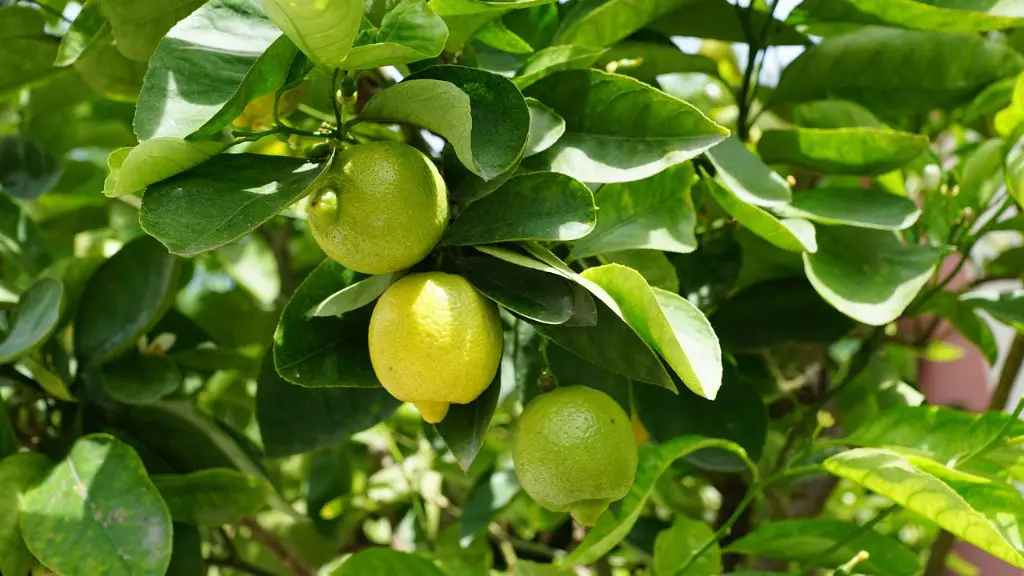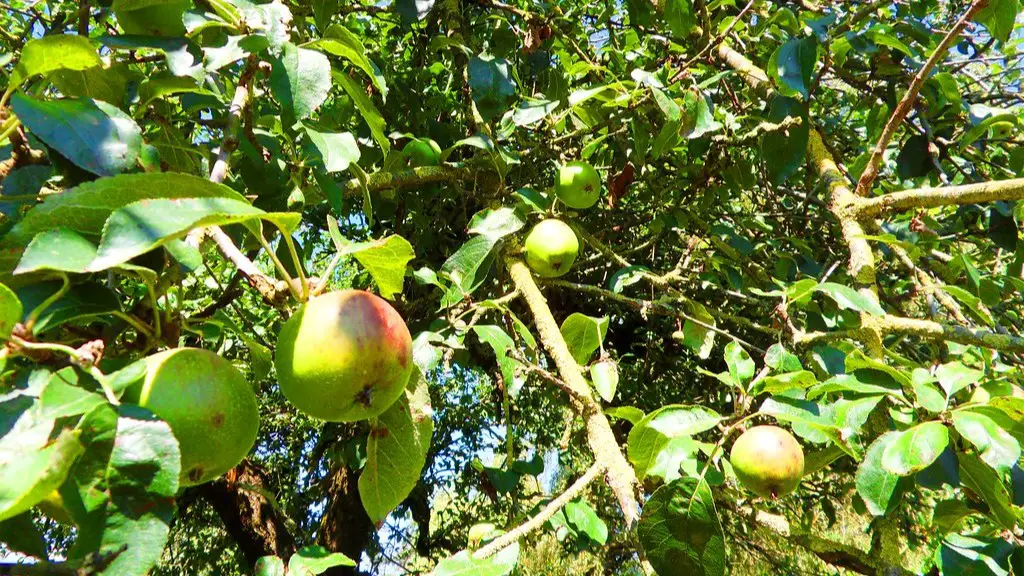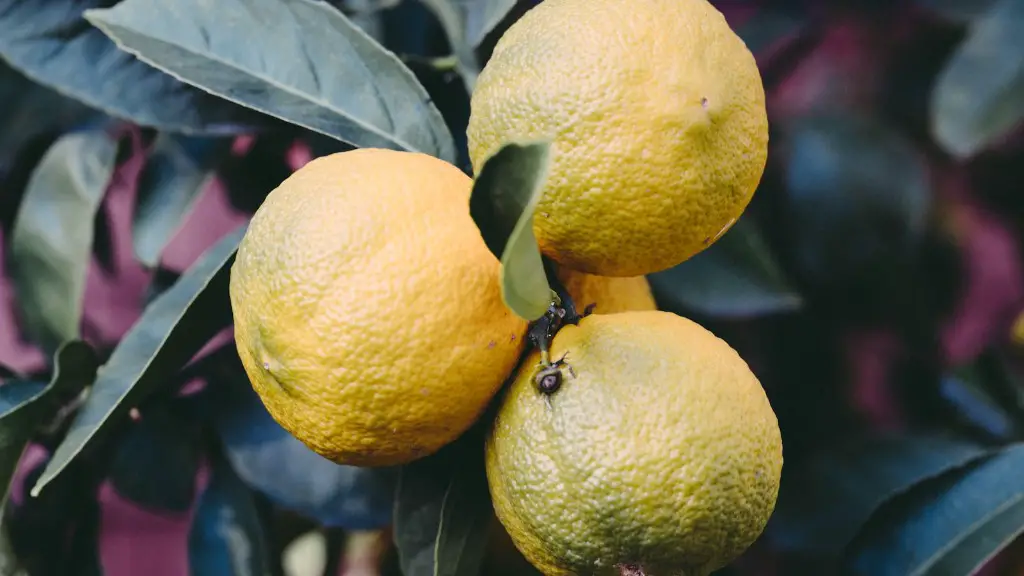Pruning indoor lemon trees requires a bit of attention and regular maintenance. It is important to understand when and how to correctly prune your lemon tree for successful growth and fruiting. To begin, citrus trees grow best with a consistent pruning regimen that begins when the tree is first brought home and continues throughout its life. The most successful pruning occurs when the tree is still young and actively growing. Early pruning creates a strong, supportable framework of sturdy branches and limits future congestion. Pruning should be done in late winter or early spring when the tree is beginning its new growth cycle.
Trees should be trimmed regularly to create a balanced, open canopy that allows an even dispersion of light and a good distribution of fruit throughout the canopy. Start by looking for spindly branches and remove any that are growing in an awkward direction. Keep the height and width of the tree in proportion by removing any branches that are longer than half the height of the tree. Pruning should also be done to correct any crossed branches and those branches that are obscuring the foliage of other branches.
Shaping can be done to achieve the desired size, form and overall visual appearance. Make sure to make small, precision cuts and do not use sharp tools that may create large, irregular wounds that leave the tree vulnerable to disease and infection. Cut just above a leaf or bud at a 45-degree angle. This directs the sap that flows from the tree and encourages new growth more strongly in the desired direction. Finally, remove any dead, dying or diseased branches as soon as possible.
Citrus trees are also susceptible to a condition known as silvering, where the foliage gradually becomes pale and yellow, followed by thinning of the foliage. This is caused by a lack of nutrition and pruning can often improve air flow near the tips of the limbs, which can help restore their vigor. Prune the tips of the branches and the center of the tree at the trunk with small, precision cuts. Take care not to remove too many leaves or branches, as this can reduce the canopy size and limit the amount of light available to the tree.
Following these pruning techniques when caring for your indoor lemon tree will help ensure it is healthy and productive. Taking the time to correctly prune can make a dramatic difference in the tree’s health and production, so it is important to understand proper pruning techniques and establish a regular pruning regimen.
Watering when Pruning
Watering your lemon tree properly is essential if you want it to remain healthy and productive. It is important to water the tree before and after pruning to ensure that the tree has adequate hydration. Before pruning, it is best to wait for the soil of your indoor lemon tree to dry slightly before providing more water. This will give the tree a chance to properly absorb the moisture and will prevent pruning wounds from becoming more susceptible to diseases.
After pruning, it is important to water the tree deeply to provide soil to the roots. Doing so will keep the tree healthy, promote growth, and provide it with the nourishment it needs. The best way to water your lemon tree is to drench it with water, allowing the water to reach deeply into the soil and provide the roots with moisture.
Fertilizing when Pruning
Fertilizing your indoor lemon tree after pruning is a great way to ensure it will remain healthy and productive. Pruning removes some of the tree’s leaves, which affects the overall health of the plant. Applying the right fertilizer will provide the nutrients and energy needed to restore the tree and create strong, healthy growth.
To get the most out of your lemon tree, look for organic forms of fertilizer, such as compost or fish emulsion. This type of fertilizer is gentle, so you can use it without worrying about harming the plant. It also breaks down slowly, giving the plant time to absorb the nourishment it needs. As with watering, it is important to apply the fertilizer deeply, so the roots can get the nutrition they need.
Tools for Pruning
It is important to use the correct tools when pruning your lemon tree. Scissors and pruning shears are the two primary tools used when pruning indoor lemon trees. Make sure that the scissors and shears you use are sterilized and sharp, to ensure a clean cut which will allow the tree to heal quickly and reduce the chance of it becoming infected.
A pruning saw is also useful when dealing with large branches and is especially helpful when pruning a tree that is too large or mature to be pruned with shears or scissors. Make sure to sterilize the saw after use to keep it free of disease and insects.
Pest Control
When pruning an indoor lemon tree, it is important to monitor for insect infestations, as citrus trees are prone to a variety of pests. Look for holes in the leaves, sticky sap, and webbing as these are all signs of an infestation. Treatment options include chemical and organic insecticides, depending on the level of the infestation.
It is also important to watch for signs of disease, such as yellow or brown leaves, wilting, or mold. Disease can be treated with fungicides, though some may require more aggressive measures, such as pruning away the affected parts of the tree. Remember to sterilize your tools to reduce the chance of spreading any diseases or infections.
Trimming the Foliage
Finally, it is important to keep the foliage trimmed on an indoor lemon tree to help promote healthy growth and fruiting. Cut back the foliage to around 10-20 percent of the tree’s total height to keep it from becoming overgrown and unmanageable. Prune away any dead, damaged or diseased leaves, and make sure to keep the canopy evenly open to ensure an even dispersal of light.
Take care to make precision cuts and never remove too much foliage at one time. Doing so can cause the tree to go into shock, which can reduce its health and decrease the amount of fruit produced. Once the tree is pruned, do not forget to water and fertilize the tree to help it recover.



